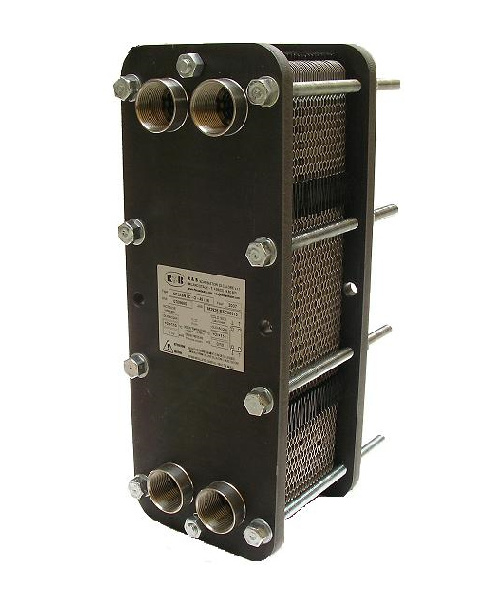Plate heat exchangers
Operating details
The fluids involved in the heat exchange process enter the exchanger through the connections placed on the initial plate. The fluids in the exchanger circulate in the channels defined by the particular configuration of the gaskets which, at the same time, guarantee separation.
Heat exchange occurs through the plates with which both fluids are in contact. The particular corrugation of the plates, increasing the turbulence of the fluids, allows for maximum efficiency and optimizing load losses.
FEATURES
- Compact design.
- High degree of flexibility offered by a modular system: you can add and remove plates to adjust the heat exchanger to the required duty.
- Easy to clean.
- Low installation and maintenance costs.
- High specific thermal efficiency.
- High resistance to corrosion .
- Excellent fouling resistance due to high turbulence.
- Gaskets not glue.
STANDARD APPLICATIONS
- Thermal recoveries (energy).
- Cooling engine waters.
- Heating swimming pool.
- Heating sanitary water.
- In the field: oleodynamic, cogeneration, naval, textile, chemical, pharmaceutical.
If applicable, heat exchangers can be CE - ∈ marked, in conformity with PED and/or ATEX Directives (97/23/CE - 94/9/CE).


